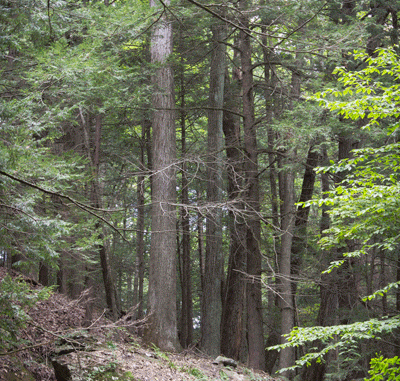
2016 came with big surprises in weather: an unusually warm winter, with a few sporadic and mild snow days that altered the season’s frigid reputation. An absence of negative degree temperatures also affected trees in some unlikely ways. Professor Eric Keeling, assistant professor of biology, has conducted extensive research on the trees on campus and elsewhere to determine how seasonal factors influence tree health.
According to Keeling, students who participated in independent studies and those who have been a part of Keeling’s Biology courses have taken part in research since 2013.
“In 2014, students in my Plant Ecophysiology course initiated observations on a set of campus trees, and one student made daily observations for all the trees for March-April,” Keeling said. “In 2015, in my Plant Ecophysiology course, the entire class was involved in creating a daily record of observations of those same trees, and we added temperature data-loggers and physiological measurements, such as photosynthesis rates, to the overall effort.”
Over the past two years, however, temperature variations brought different results.
“2014 and 2015 were cold winters and springs, while 2016 has been unusually warm. So, by the end of this season, we will have a really nice comparison between cold and warm years for the same set of trees. Already, we have documented flowering in several of our trees about a month earlier this spring than we did in 2014 and 2015,” states Keeling.
Results include mixed results of how early trees flowered. Some tree species were affected by the temperature, while others may be less sensitive to drops or rises in temperature change and other environmental factors still undetermined by scientists.
“There is still a lot that scientists don’t know about what controls the timing of flowering or leaf emergence in trees,” Keeling said. “For example, some species, such as red maple, appear to be very sensitive to temperature and will flower and leaf-out early during a warm spring… red maple flowered almost exactly one month earlier this spring than it did last year.”
“Other trees, such as American beech, are less sensitive to temperature and appear to be triggered primarily by day-length. These species may flower and leaf out at the same time every year regardless of how warm it or cold it is. In order to predict how plants will respond to a warmer climate, scientists need a better understanding of these basic physiological responses,” Keeling said
The studies also conclude what may be intuitive to most who have experienced the warmer winter months. And regardless of major, Keeling adds this is an important lesson for all students to learn. Biology students profit from performing lab work related to their field, and non-biology majors can benefit from practicing other types of learning, such as being out in nature and viewing details that may otherwise remain undiscovered.
“It is a valuable activity on many levels,” Keeling said. “It is a hands-on, data-collection activity that relates to the theme of the course – global change. It also allows students to appreciate some of the local biodiversity of our area. And perhaps most importantly, it teaches the benefits of slowing down and making close observations of nature.”
“It is easy to miss most of it, but just as easy to stop every day for a few minutes, preferably at the same tree, to really get the whole story. And that story is different for different species and for different trees within a species,” Keeling said
Every once in a while, stop to smell the roses, or better yet, stop to observe the trees year round during their life changes, from bare branch to budding beginnings.
